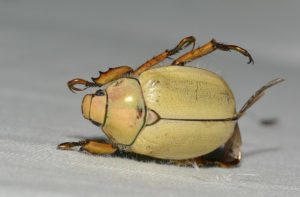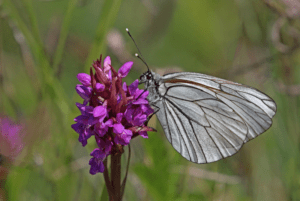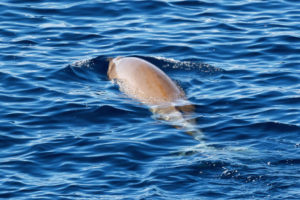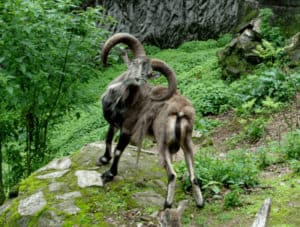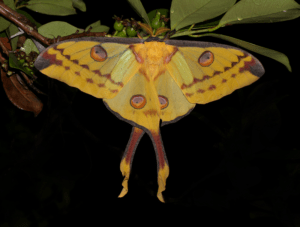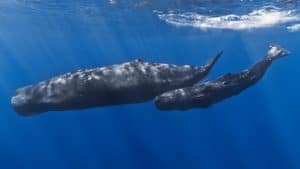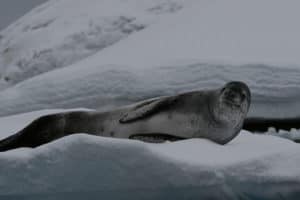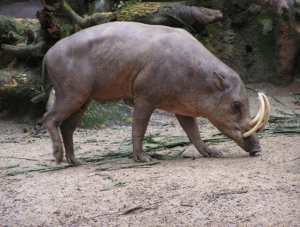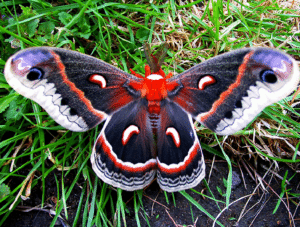Goldsmith Beetle Facts Related Articles Goldsmith Beetle Physical Description Firstly, despite its rather obvious physical appeal, the wonderfully colorful Goldsmith Beetle remains a roughly average-sized variety of scarab beetle. This holds true because mature adults typically attain an average body length of about 1 in (2.5 cm). Furthermore, its bright yellow coloring also represents its […]
7 Stunning North American Lepidoptera
7 Stunning North American Lepidoptera Few people would dispute the opinion that the Order of Lepidoptera (butterflies and moths) contains some of the most incredibly beautiful invertebrates in the world. They are also among the most widespread of all insects. Various species live throughout virtually all temperate and tropical portions of the Earth. It remains […]
Goose-Beaked Whale
Goose-Beaked Whale Facts The often-overlooked Goose-Beaked Whale actually represents the most widely distributed of all known varieties of beaked whales. The scientific name of this rather remarkable animal (Ziphius cavirostris) derives from a combination of both Greek and Latin words. The first known description of this species occurred in 1823, by French anatomist Georges Cuvier. […]
Bharal
Bharal Facts Related Articles Bharal Physical Description The beautiful Bharal rarely if ever fails to capture the immediate attention and appreciation of those individuals fortunate enough to encounter it in the wild. Unlike some of its relatives, though, it does so for several reasons. That’s because it’s not only lovely, but boasts respectable dimensions. In […]
Comet Moth
Source: https://bit.ly/2N4p6za Photo: Sue Roehl CCL: https://bit.ly/1ryPA8o Comet Moth Facts Related Articles Comet Moth Physical Description It’s worth noting, first of all, that the Comet Moth impresses for more than just its sheer size. That statistic does, however, bear elaborating on. Although the species ranks as large overall, though, it also displays a marked degree […]
Sperm Whale
Source: http://bit.ly/1Ghfa8m Photo: Gabriel Barathieu CCL: https://bit.ly/3Clor2a Sperm Whale Facts Related Articles Sperm Whale Physical Description You can easily distinguish and recognize the Sperm Whale by its extremely large head, relative to body length. Varying among individuals, the head represents between 25-35 percent of the entire body length. This species also displays the greatest degree […]
Leopard Seal
Leopard Seal Facts Related Articles Leopard Seal Physical Description The fabulous Leopard Seal almost immediately grabs the attention of those individuals fortunate enough to view one of these magnificent creatures. Yet, this usually holds true for several reasons. That’s true since it’s not only a beautiful work of evolution, but also physically quite large. In […]
North Sulawesi Babirusa
North Sulawesi Babirusa Facts Related Articles North Sulawesi Babirusa Physical Description The North Sulawesi Babirusa represents yet another incredible species in Nature. While the tusks of the male represent an impressive feature, the bodies remain average-sized. Yet the females possess no tusks at all. Adults weigh an average of 220 lb (100 kg), and about […]
African Bush Pig
African Bush Pig Facts Related Articles Source: http://bit.ly/2Hi5e9g Photo: Bernard DUPONT CCL: http://bit.ly/2xLZ0ap African Bush Pig Physical Description The African Bush Pig also attains a height of as much as 39 in (100 in) at the shoulder. Large individuals may weigh up to 331 lb (150 kg). In addition, a small degree of sexual dimorphism […]
Cecropia Moth
Cecropia Moth Facts Related Articles Cecropia Moth Physical Description The dazzling Cecropia Moth actually manages to impress those who encounter it in a variety of ways. That’s because it evolved to be both beautiful and large for its kind. In fact, it ranks as the largest known variety of moth native to its portion of […]
